Main Menu
Welcome
I've mused before about the telling coincidence of adherents to one strange belief also proclaiming their belief in other strange things, for instance a creationist believing the moon landings were fake. Exactly this collusion of delusions with conspiracy theories and anti-science has now been addressed by a study to appear in the journal "Psychological Science" (press release), entitled: "NASA faked the moon landing - Therefore (Climate) Science is a Hoax: An Anatomy of the Motivated Rejection of Science". The bottom line: the anti-science movement largely consists of people who make up their own reality without regard to any evidence. Given that, at least in the US, these unpersuadable delusionals are largely associated with one end of the political spectrum, any attempt at providing a politically balanced journalism must inevitably end in a scientifically biased journalism - biased towards fiction rather than reality, as pointed out before. This study thus corroborates previous speculations from a number of angles. I don't envy journalists in the US...
Posted on Friday 24 August 2012 - 14:15:23 comment: 0
{TAGS}
{TAGS}
This weekend a very interesting exhibition opens at the Georg Kolbe Museum in Berlin. It's curated by Marc Wellmann and entitled "BIOS: concepts of life in contemporary sculpture". I met Marc a few years ago by chance. He curated an exhibition in New York and I was on the way to a conference somewhere else in the US and we were seated next to each other on the plane from Berlin to New York. On our way back, a few days later, we had, again by chance, seats in the same row but on adjacent sides of the aisle. We got to talk about his job as a curator for modern sculpture and I was immediately interested. We stayed in contact over the years with him being interested in curating an exhibition with a biological theme and me visiting the Georg Kolbe Museum whenever he would give a tour of the exhibitions he curated.
This weekend opens the exhibitions with the biological theme he had been thinking about for all these years and I had been more than honored when he asked me if I could write a short article for the catalog of the exhibition. I told him I had never written for such an audience before and that I was quite self-conscious about how good a job I would be able to do, but he nevertheless thought I should try it. Well, I wrote the article and it'll be in the catalog. The short piece is available in both German and English and I hope it'll whet your appetite for the exhibition (the layout of the text is similar to the one in the catalog, but my own). If you'd like to get a visual impression of some of the pieces I mention in the article, please find them below:
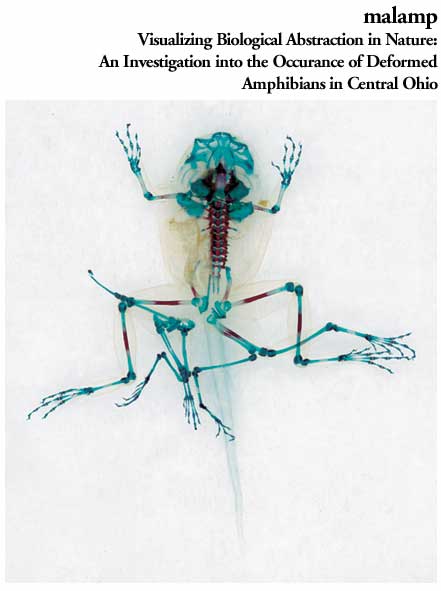
Brandon Ballangée
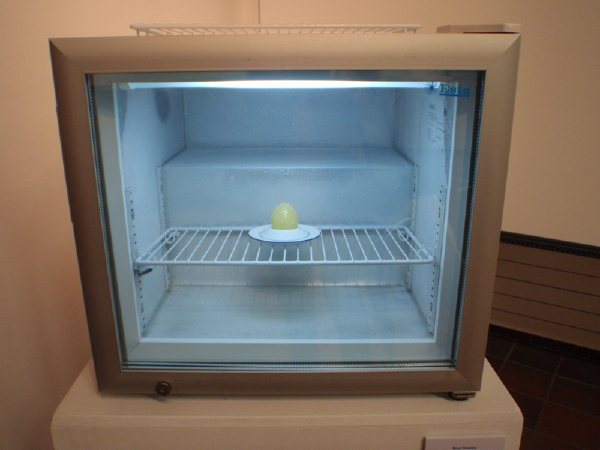
Brad Downey
Posted on Thursday 23 August 2012 - 15:41:36 comment: 0
{TAGS}
{TAGS}
I just received the PDF version of the TAZ article on open access, with the cover illustration, photos and all. I've put it in the downloads area so everyone can have a look at it. Pretty nice that an article in a general newspaper on open access is openly accessible like that, eh?
Posted on Thursday 23 August 2012 - 14:10:14 comment: 0
{TAGS}
{TAGS}
Apparently, not much, according to this quote by Daniel Sarewitz: “For those who cannot follow the mathematics, belief in the Higgs is an act of faith, not of rationality” in a recent article in the journal Nature. This sentiment echoes that of many creationists and other religious fundamentalists who vehemently try to smear science as just another religion (oddly enough for people who don't usually use the word 'religion' with such a negative connotation). Richard Dawkins has a very good reply to such notions (from 1997) and it's quite sad that the journal that calls itself "the no. 1 weekly science journal" is now supporting religious zealots all over the world with such blatant nonsense.
Thank you, Daniel Sarewitz and Nature, now the religious nutcases can cite 'a world-leading science journal' when they claim that science is just another religion. I guess a good way of understanding this strange perspective is to see it as the author of this blog post: if you don't understand science, the differences between science and religion get blurred, sort of like many uneducated people in a certain North-American country may think Africa or Europe are countries.
Well, Dr. Sarewitz, I have some hard to swallow news for you: neither Europe nor Africa are countries but continents with many countries inside of them. Instead of wasting the precious space at Nature (they have so little room they can only accommodate 8% of the articles scientists want to publish there) by reinforcing and promoting ignorant falsehoods, someone should have spent these pages explaining how science is different from religion and how religion, if anything, resembles more a contagious disease that infects people and causes all kind of harm, to speak with Richard Dawkins in the piece linked above.
For instance, one could have written that physicists, unlike priests, actually get answers from the entity they're posing their questions to. It's what makes the difference between an experiment, where scientists ask nature questions, and prayer, where people talk to an invisible person which they usually perceive as an old white guy with a beard, hovering somewhere in the sky. Or at least it is most often referred to with male pronouns.
For another instance, the results of experiments can be observed by other people, whereas the answers of the invisible being are usually in the head of one person only - at least there has not been any confirmation of any recorded answer. Another difference is that scientists actually can be unambiguously wrong, unlike most priests. More differences can be observed when the predictions of science are compared with the predictions of religions.
I could go on, but for most of the three readers of this obscure blog the differences between science and religion should be fairly obvious, at least, more obvious than they seem to be for Dr. Sarewitz at Nature.
UPDATE: Just to make this point crystal clear, in case it wasn't already: the contrast between science and religion is so stark and crisp, that you need not even be able to read or write to comprehend it, let alone be an expert mathematician or scientist. Thus, there is no faith involved in the decision about whether or not the evidence is sufficient to claim that the Higgs boson exists.
Posted on Wednesday 22 August 2012 - 16:32:06 comment: 0
{TAGS}
{TAGS}
Ok, not all of you will enjoy it, as some of the triple whammy last week was in German, but at least it's a good thing that the general media are slowly picking up on the efforts of scientists to make their work accessible to all and everyone.
It started with a regional radio station that picked up on our little Open Science project that involved tracking the movements and postures of flies and their larvae. In a short 5min interview on Wednesday, they asked a few questions about this project:
[play]&file=http://http-stream.rbb-online.de/kul/programm/wissen/2012/wissen_1629.mp3&width=200&height=25&backcolor=FFFFFF&frontcolor=000000&lightcolor=ffffff&screencolor=ffffff[/play]
On the following Friday, Voice of Russia aired a 30min panel discussion on Open Access starring Ross Mounce (OKFN panton fellow), Rita Gardner (director of the Royal Geological Society), Timothy Gowers (field's medalist) and myself:
On the Saturday then, finally, the double page article in the German newspaper "Tageszeitung" on open access and how we try to accomplish it. You can read the full text for free in their archive and here is a picture to show you the layout:
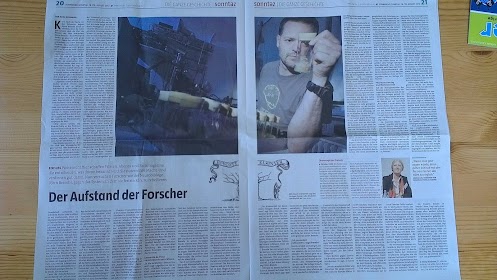
One consequence of the article in the newspaper was that someone has created a page about me on the German Wikipedia! I guess in this day and age this means I now truly exist...

Posted on Monday 20 August 2012 - 21:15:01 comment: 0
{TAGS}
{TAGS}
This morning I was in the studio of RBB Kulturradio and had a short, snappy 5min interview about our recent back-to-back Open Science publications on fruit fly tracking. You can listen to it here:
[play]&file=http://http-stream.rbb-online.de/kul/programm/wissen/2012/wissen_1629.mp3&width=200&height=25&backcolor=FFFFFF&frontcolor=000000&lightcolor=ffffff&screencolor=ffffff[/play]
Posted on Wednesday 15 August 2012 - 11:05:38 comment: 0
{TAGS}
{TAGS}
For the better part of this year, Marcus Munafò and I have been working on a manuscript reviewing the empirical literature on journal rank and its impact on science. In early June we received a rejection letter together with three reviews from PLoS Biology. We are currently in the process of revising the manuscript in order to submit it to a different journal. In the light of the traffic and discussion on two posts about journal rank (or Thomson Reuters' Impact Factor, to be specific), one by Stephen Curry and one by DrugMonkey, we decided to release this submitted, non-revised version (our fifth internal version) to the public with all three reviews attached at the end. By now, this version is several months old and has since already seen some revising, especially new references have been added. We release this draft manuscript in an attempt to set a standard for the empirical evidence used in any debate on journal rank, even before our manuscript has passed formal peer-review.
Because it has yet to pass formal peer-review, I'd like to point out that despite of the controversial debate sparked by Stephen's original post (which echoes some of the evidence we cite in our manuscript), the main reason for rejecting our article stated by all three reviewers was not that there was anything wrong with our review of the current literature, but that we didn't write anything new:
Editor:
We are very sympathetic to the point of view presented here, but unfortunately, as the reviewers note, most of the issues raised in the paper have been covered extensively elsewhere and this article does not add significantly to the contributions of previous publications.
Reviewer #1:
While I am in agreement with the insidious and detrimental influences on scientific publishing identified and discussed in this manuscript, most of what is presented has been covered thoroughly elsewhere.
Reviewer #2:
The authors make sound points, and for doing so can rely on years of solid research that has investigated the pernicious role of journal rank and the impact factor in scholarly publishing.
Overall, I deem this a worthy and valid "perspective" that merits publication, but do want to make the following reservations.
The particular arguments that the authors make with respect to the deficiencies of the journal impact factor (irreproducible, negotiated, and unsound) have already been made extensively in the literature, in online forums, in bibliometric meetings, etc to the point that very little value is gained by the authors restating them in this perspective.
Most of the points dedicated to the retractions and decline effect, and the relation between journal rank and scientific unreliability are also extensively made in the literature that the authors cite.
In other words, very few new or novel insights are made in this particular perspective, other than to restate that which has already been debated extensively in the relevant literature.
Reviewer #3:
Brembs & Munafò claim that it is bad scientific practice to use journal rank (that is a scholarly publishing ecosystem in which there's some sort of hierarchy of journals) as an assessment tool. They are particularly concerned with journal rankings based on Thomson Reuter's Impact Factor (IF).
Their four conclusions are:
1) Journal rank is a weak to moderate predictor of scientific impact
2) Journal rank is a moderate to strong predictor of both intentional and unintentional scientific unreliability
3) Journal rank is expensive, delays science and frustrates researchers;
4) Journal rank as established by Thomson Reuters' Impact Factor violates even the most basic scientific standards, but predicts subjective judgments of journal quality.
I have problems with at least some of the interpretation of evidence used to support the first three of these (I think it'd be hard to find anybody who disagrees with the last one).
We think all three reviewers have had very valuable and competent suggestions and criticisms on some points of our manuscript and we are currently working on substantially revising it for submission elsewhere. Because of the largely positive tone of the reviews and the very specific criticisms they offered, we thought publishing the draft manuscript with the points raised by the reviewers (most of which we tend to agree with) would be valuable for the section of the scientific community which isn't so familiar with the data at our disposal with regard to journal rank (and the kind of data we still lack). We do have quite some work ahead of us and will likely not have a revised version ready for submission before October/November.We are very sympathetic to the point of view presented here, but unfortunately, as the reviewers note, most of the issues raised in the paper have been covered extensively elsewhere and this article does not add significantly to the contributions of previous publications.
Reviewer #1:
While I am in agreement with the insidious and detrimental influences on scientific publishing identified and discussed in this manuscript, most of what is presented has been covered thoroughly elsewhere.
Reviewer #2:
The authors make sound points, and for doing so can rely on years of solid research that has investigated the pernicious role of journal rank and the impact factor in scholarly publishing.
Overall, I deem this a worthy and valid "perspective" that merits publication, but do want to make the following reservations.
The particular arguments that the authors make with respect to the deficiencies of the journal impact factor (irreproducible, negotiated, and unsound) have already been made extensively in the literature, in online forums, in bibliometric meetings, etc to the point that very little value is gained by the authors restating them in this perspective.
Most of the points dedicated to the retractions and decline effect, and the relation between journal rank and scientific unreliability are also extensively made in the literature that the authors cite.
In other words, very few new or novel insights are made in this particular perspective, other than to restate that which has already been debated extensively in the relevant literature.
Reviewer #3:
Brembs & Munafò claim that it is bad scientific practice to use journal rank (that is a scholarly publishing ecosystem in which there's some sort of hierarchy of journals) as an assessment tool. They are particularly concerned with journal rankings based on Thomson Reuter's Impact Factor (IF).
Their four conclusions are:
1) Journal rank is a weak to moderate predictor of scientific impact
2) Journal rank is a moderate to strong predictor of both intentional and unintentional scientific unreliability
3) Journal rank is expensive, delays science and frustrates researchers;
4) Journal rank as established by Thomson Reuters' Impact Factor violates even the most basic scientific standards, but predicts subjective judgments of journal quality.
I have problems with at least some of the interpretation of evidence used to support the first three of these (I think it'd be hard to find anybody who disagrees with the last one).
We urge all interested parties to pay special attention to the references we cite, not just our own summary of the published results. The interpretation of data is sometimes controversial, which is precisely the reason we cite all the data which gave rise to our conclusions. We would be delighted to receive additional, competent criticism of our reading of the empirical data.
We would hope that by releasing our draft manuscript early, especially the questions where we lack sufficient data to answer would inspire colleagues to attempt to collect that data and help us make more informed decisions with regard to what is arguably one of the most important infrastructures in all sciences and many humanities, our scholarly communication system, or rather the lack thereof.
Posted on Tuesday 14 August 2012 - 14:11:57 comment: 0
{TAGS}
{TAGS}
I wasn't planning to write anything on Stephen Curry's latest piece on the negotiated, irreproducible and mathematically unsound Impact Factor sold by Thomson Reuters to gullible university administrators. I agree with most of what he writes there and, as he correctly cites a 20 year-old paper, all of it has been known for a decade or more. So why now pick it up anyway? First, apparently a lot of people are recommending the article, raising the suspicion that there may be some last refuges of scientists out there who are isolated from common knowledge. Second, he mentions a smear campaign against the IF, or rather shaming the use of IF. Of course, everybody who is using the IF immediately disqualifies themselves and by now everybody knows that. In fact, every scientist who is not aware of the unscientific nature of the IF should ask themselves if they are in the right profession. Taking the IF seriously is similar to taking creationism, homeopathy, or divining seriously. Stephen writes:
If you publish a journal that trumpets its impact factor in adverts or emails, you are statistically illiterate. (If you trumpet that impact factor to three decimal places, there is little hope for you.)
Which I thought was worth pointing out in the light of Nature Publishing Group's aggressive spam campaign earlier this year touting their impact factors to the third decimal. NPG really is beyond hope, it seems.The other reason I though I should comment was a post on DrugMonkey's blog, where he writes that
This notion that we need help "sifting" through the vast literature and that that help is to be provided by professional editors at Science and Nature who tell us what we need to pay attention to is nonsense.
And acutely detrimental to the progress of science.
I mean really.
You are going to take a handful of journals and let them tell you (and your several hundred closest sub-field peers) what to work on? What is most important to pursue? Really?
That isn't science.
That's sheep herding.
And guess what scientists? You are the sheep in this scenario.
I couldn't agree more. There is no evidence in the published literature that journal rank has any persuasive predictive property for any measure of scientific quality, be it expert review, citations, sound methodology, anything. On the contrary, there is solid evidence that journal rank is predicting article unreliability. Thus, the point needs to be made that there is no need for a replacement of IFs - we need to get rid of journals altogether as the concept of a journal is outdated and can be shown to be detrimental for science. This is an old idea and new data has only supported this insight. What we do need is a scientific metrics system that assists us in discovering, sorting and filtering the fraction of articles from the roughly 1.5 million published articles every year that are relevant to our research. There are currently many article-based metrics being developed which already today, with existing technology, can easily replace any journal-based metric for this task.And acutely detrimental to the progress of science.
I mean really.
You are going to take a handful of journals and let them tell you (and your several hundred closest sub-field peers) what to work on? What is most important to pursue? Really?
That isn't science.
That's sheep herding.
And guess what scientists? You are the sheep in this scenario.
Posted on Tuesday 14 August 2012 - 11:36:21 comment: 0
{TAGS}
{TAGS}
Today appeared our two companion papers on tracking individual fruit flies or their larvae in PLoS ONE. While our colleagues Alex Gomez-Marin and Matthieu Louis in Spain described work on larval locomotion, our paper was about tracking adult flies in Buridan's paradigm:
What I particularly like about our two papers is that they're moving us a step closer to making science more open. All the code used in this work is completely open and accessible to anybody. We also made the raw data available for download, so anybody can use the software and check our results or come up with clever new ways to analyze it.
Currently, we're working on the technology to make the data publicly available at the time of analysis, rather than publication and to have that data stored in semantic databases, taking advantage of semantic web technology. The first and corresponding author of our paper, Julien Colomb is the person behind this project. He is currently collaborating with Mark Hahnel from FigShare to work on the technicalities on hooking up our R-Scripts, which do all the analysis with the database at FigShare. We've also started thinking about an ontology for (fly) behavior, but this work hasn't really taken off, yet.
Read the press release here.
Below are the two abstracts and links to the full publications:
Gomez-Marin A. Partoune N; Stephens G, Louis M (2012) Automated tracking of animal posture and movement during exploration and sensory orientation behaviors
http://dx.plos.org/10.1371/journal.pone.0041642
The nervous functions of an organism are primarily reflected in the behavior it is capable of. Measuring behavior quantitatively, at high-resolution and in an automated fashion provides valuable information about the underlying neural circuit computation. Accordingly, computer-vision applications for animal tracking are becoming a key complementary toolkit to genetic, molecular and electrophysiological characterization in systems neuroscience.We present Sensory Orientation Software (SOS) to measure behavior and infer sensory experience correlates. SOS is a simple and versatile system to track body posture and motion of single animals in two-dimensional environments. In the presence of a sensory landscape, tracking the trajectory of the animal’s sensors and its postural evolution provides a quantitative framework to study sensorimotor integration. To illustrate the utility of SOS, we examine the orientation behavior of fruit fly larvae in response to odor, temperature and light gradients. We show that SOS is suitable to carry out high-resolution behavioral tracking for a wide range of organisms including flatworms, fishes and mice.Our work contributes to the growing repertoire of behavioral analysis tools for collecting rich and fine-grained data to draw and test hypothesis about the functioning of the nervous system. By providing open-access to our code and documenting the software design, we aim to encourage the adaptation of SOS by a wide community of non-specialists to their particular model organism and questions of interest.
Colomb J, Reiter L, Blaszkiewicz J, Wessnitzer J, Brembs B (2012) Open source tracking and analysis of adult Drosophila locomotion in Buridan's paradigm with and without visual targets
http://dx.plos.org/10.1371/journal.pone.0042247
Insects have been among the most widely used model systems for studying the control of locomotion by nervous systems. In Drosophila, we implemented a simple test for locomotion: in Buridan's paradigm, flies walk back and forth between two inaccessible visual targets [1]. Until today, the lack of easily accessible tools for tracking the fly position and analyzing its trajectory has probably contributed to the slow acceptance of Buridan's paradigm.We present here a package of open source software designed to track a single animal walking in a homogeneous environment (Buritrack) and to analyze its trajectory. The Centroid Trajectory Analysis (CeTrAn) software is coded in the open source statistics project R. It extracts eleven metrics and includes correlation analyses and a Principal Components Analysis (PCA). It was designed to be easily customized to personal requirements. In combination with inexpensive hardware, these tools can readily be used for teaching and research purposes. We demonstrate the capabilities of our package by measuring the locomotor behavior of adult Drosophila melanogaster (whose wings were clipped), either in the presence or in the absence of visual targets, and comparing the latter to different computer-generated data. The analysis of the trajectories confirms that flies are centrophobic and shows that inaccessible visual targets can alter the orientation of the flies without changing their overall patterns of activity.Using computer generated data, the analysis software was tested, and chance values for some metrics (as well as chance value for their correlation) were set. Our results prompt the hypothesis that fixation behavior is observed only if negative phototaxis can overcome the propensity of the flies to avoid the center of the platform. Together with our companion paper, we provide new tools to promote Open Science as well as the collection and analysis of digital behavioral data.
?
Posted on Thursday 09 August 2012 - 22:59:45 comment: 0
{TAGS}
{TAGS}
It has been very quiet around here recently. The reason was that I was away for a particular kind of behavioral and physiological experiments, traveling to places like these:


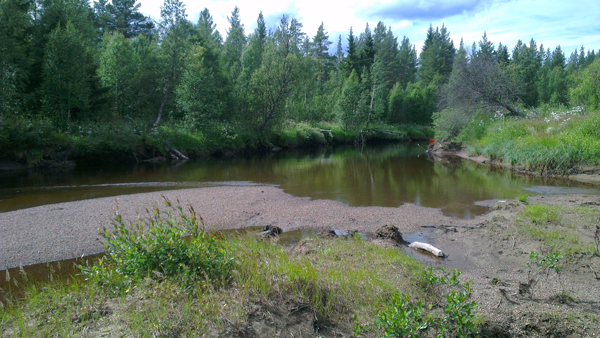
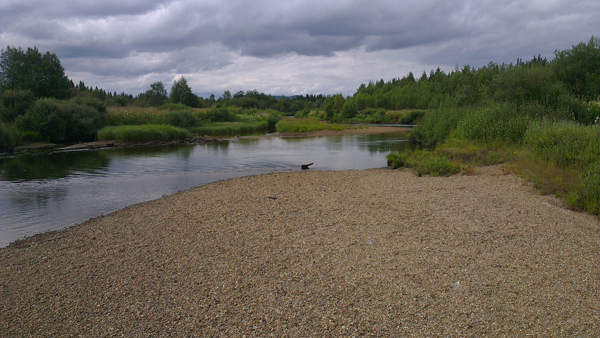
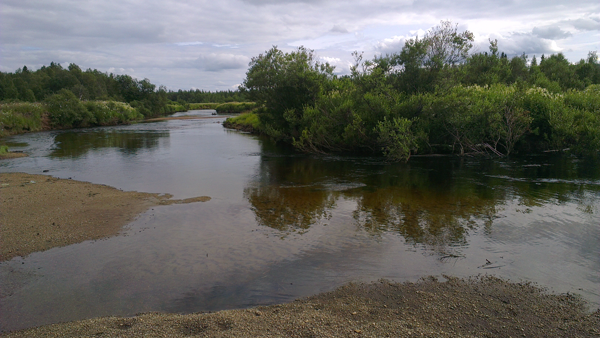
There, I tried to imitate insects like this one:

Or this one:
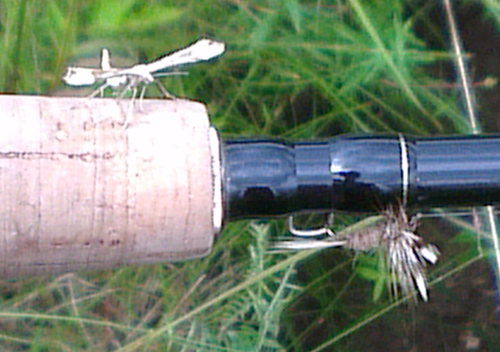
with artificial flies such as the one depicted below the original in the picture above. The reason for imitating these insects was to convert as many of these:

or these:
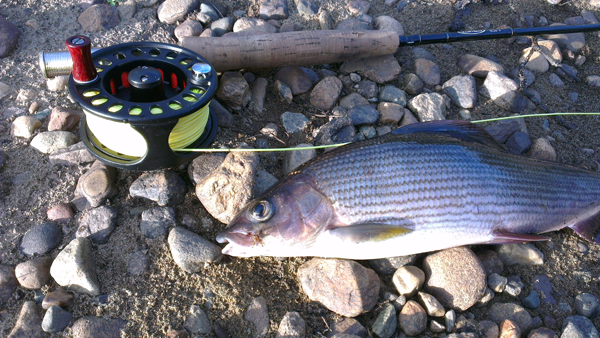
Into something more palatable, such as these:

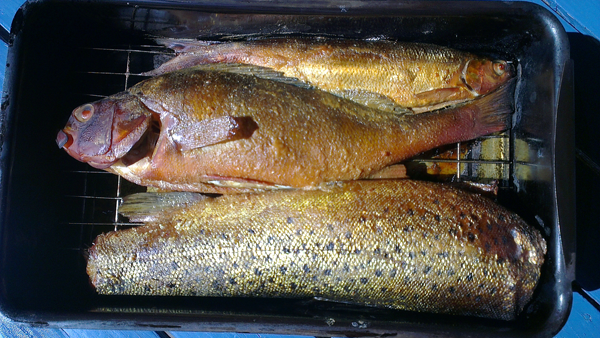
List of vertebrate species in order of appearance: Thymallus thymallus, Coregonus sp., Perca fluviatilis, Salmo trutta.
I'm now back in Berlin, though, and will be busy doing the more conventional experiments around here.
Posted on Tuesday 07 August 2012 - 12:41:58 comment: 0
{TAGS}
{TAGS}
Render time: 0.2419 sec, 0.0114 of that for queries.





